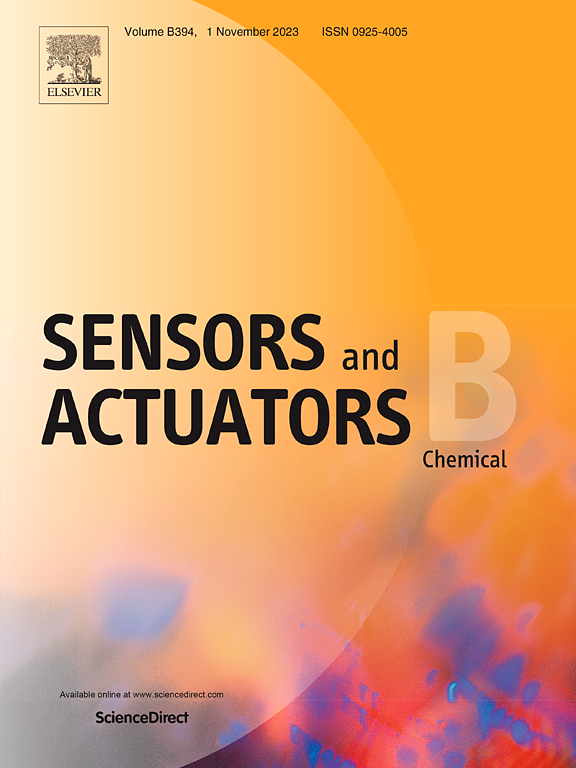具有内部参考的离子选择光学传感器:对延长功能和无校准测量的追求
IF 8
1区 化学
Q1 CHEMISTRY, ANALYTICAL
引用次数: 0
摘要
与大多数化学传感器一样,光电器件在分析常规中的扩散受到周期性传感器校准需求的阻碍。这种基本限制源于许多化学和技术因素(例如,照明源的不稳定性,传感器相位组成的变化等),导致光电二极管信号在并行测量和随时间变化的偏差。在化学传感器领域,开发新的无校准分析方法仍然是一个相关的挑战。本研究旨在开发和验证不需要校准的离子选择性光学传感器阵列。这些阵列包含一个内部光信号参考,由抑制交换容量的聚合物光电器件组成。这种光电器件作为光信号标准的适用性在广泛的pH和背景电解质浓度范围内得到了证明:从pH 5到9,在浓度达到0.1 m的阳离子和亲脂阴离子溶液中,这一实验观察得到了数值模拟理论分析的支持。研究了共萃取和离子交换对光信号稳定范围的影响。此外,理论和实验都表明,通过调节标准光电二极管中亲脂指示剂的酸度,内参的工作范围可以调整到所需的pH或电解质浓度。验证结果表明,采用内标法测定样品中Na+浓度是可行的,准确度较高。本文章由计算机程序翻译,如有差异,请以英文原文为准。

Ion-Selective Optical Sensors with Internal Reference: on the Quest for Prolonged Functionality and Calibration-Free Measurements
As with most chemical sensors, the proliferation of optodes in analytical routine is hampered by the need for periodic sensor calibration. This fundamental limitation arises from a number of chemical and technological factors (e.g., instability of the illumination source, changes in the composition of the sensor phase, etc.), leading to deviation of the optodes signal in parallel measurements and over time. The development of new approaches for calibration-free determination of analytes with optodes remains a pertinent challenge in the field of chemical sensors. The presented study is aimed at the development and validation of ion-selective optical sensor arrays that do not require calibration. These arrays incorporate an internal optical signal reference composed of polymeric optodes with suppressed exchange capacity. The applicability of such optodes as optical signal standards is demonstrated in a broad range of pH and background electrolyte concentrations: from pH 5 to 9 in solutions of cations and lipophilic anions with concentrations reaching 0.1 M. This experimental observation is supported by theoretical analyses performed by numerical simulation. The study identifies the effect of coextraction and ion exchange on the range of the optical signal stability. Furthermore, it is shown both theoretically and experimentally that by modulating the acidity of the lipophilic indicator in the standard optode, the operational range of the internal reference can be adjusted to the desired pH or electrolyte concentrations. In addition, the validation results demonstrate the feasibility of determining Na+ concentration in the sample using internal standards with fair accuracy.
求助全文
通过发布文献求助,成功后即可免费获取论文全文。
去求助
来源期刊

Sensors and Actuators B: Chemical
工程技术-电化学
CiteScore
14.60
自引率
11.90%
发文量
1776
审稿时长
3.2 months
期刊介绍:
Sensors & Actuators, B: Chemical is an international journal focused on the research and development of chemical transducers. It covers chemical sensors and biosensors, chemical actuators, and analytical microsystems. The journal is interdisciplinary, aiming to publish original works showcasing substantial advancements beyond the current state of the art in these fields, with practical applicability to solving meaningful analytical problems. Review articles are accepted by invitation from an Editor of the journal.
 求助内容:
求助内容: 应助结果提醒方式:
应助结果提醒方式:


